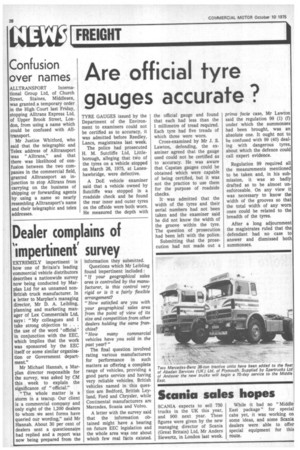Are official tyre gauges accurate ?
Page 30

If you've noticed an error in this article please click here to report it so we can fix it.
TYRE GAUGES issued by the Department of the Environment to examiners could not be certified as to accuracy, it was admitted before Reedley, Lancs, magistrates last week.
The police had prosecuted H. M. Sutcliffe Ltd, Littleborough, alleging that two of the tyres on a vehicle stopped on March 26, 1975, at Laneshawbridge, were defective.
A DoE vehicle examiner said that a vehicle owned by Sutcliffe was stopped in a roadside check and he found the rear inner and outer tyres on the offside were both worn. He measured the depth with the official gauge and found that each had less than the 1 millimetre of tread required. Each tyre had five treads of which three were worn.
Cross-examined by Mr J. S. Lawton, defending, the examiner agreed that the gauge used could not be certified as to accuracy. He was aware that Capstan gauges could be obtained which were capable of being certified, but it was not the practice to use them for the purpose of roadside checks.
It was admitted that the width of the tyres and their serial numbers had not been taken and the examiner said he did not know the width of the groove within the tyre. The question of prosecution had been left with the police.
Submitting that the prosecution had not made out a prima facie case, Mr Lawton said the regulation 99 (1) (f) under which the summonses had been brought, was an absolute one. It ought not to be confused with 99 (40) dealing with dangerous tyres, about which the defence could call expert evidence.
Regulation 99 required all the measurements mentioned to be taken •and, in his submission, it was so badly drafted as to be almost unenforceable. On any view it was necessary to know the width of the grooves so that the total width of any worn ones could be related to the breadth of the tyres.
After a long adjournment the magistrates ruled that the defendant had no case to answer and dismissed both summonses.




































































































































